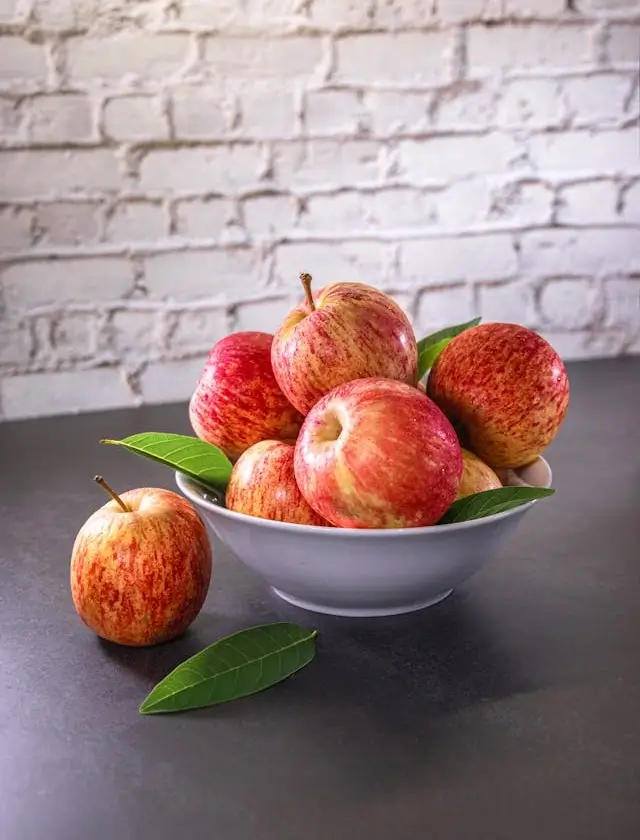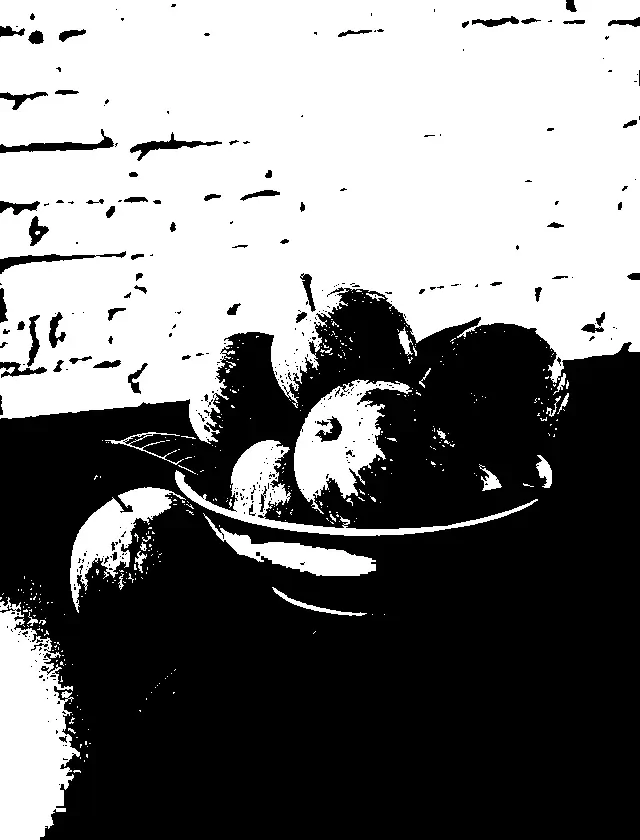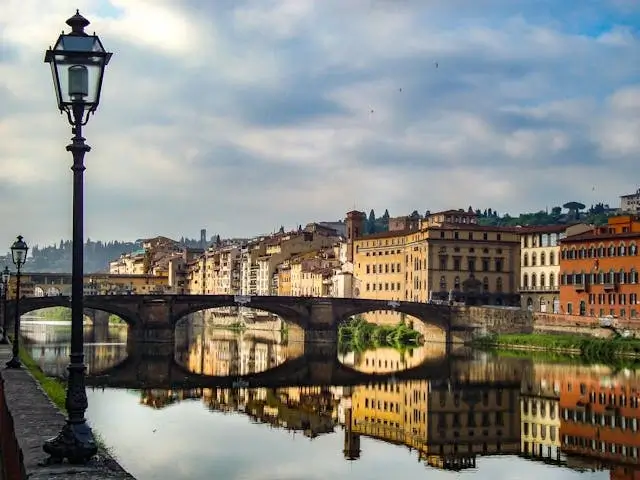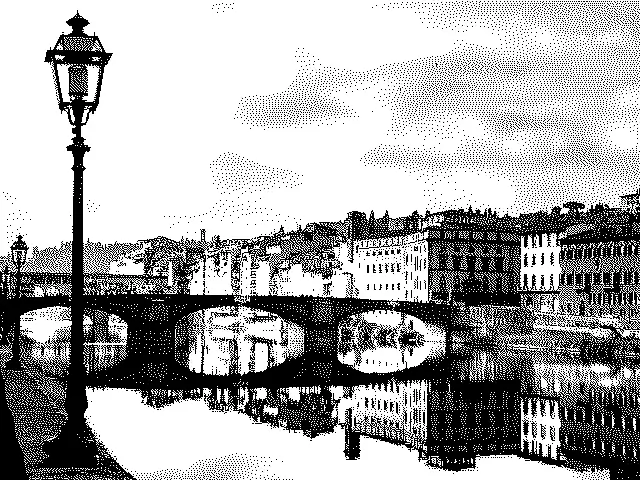This free online tool lets you create a black and white WebP image. Just load your colorful WebP image in the input editor, and you'll instantly get a black and white WebP image in the output editor. In the tool settings, you can choose between the high-contrast two-color conversion mode or a dithered conversion mode that preserves details. Created by team Browserling.
This free online tool lets you create a black and white WebP image. Just load your colorful WebP image in the input editor, and you'll instantly get a black and white WebP image in the output editor. In the tool settings, you can choose between the high-contrast two-color conversion mode or a dithered conversion mode that preserves details. Created by team Browserling.
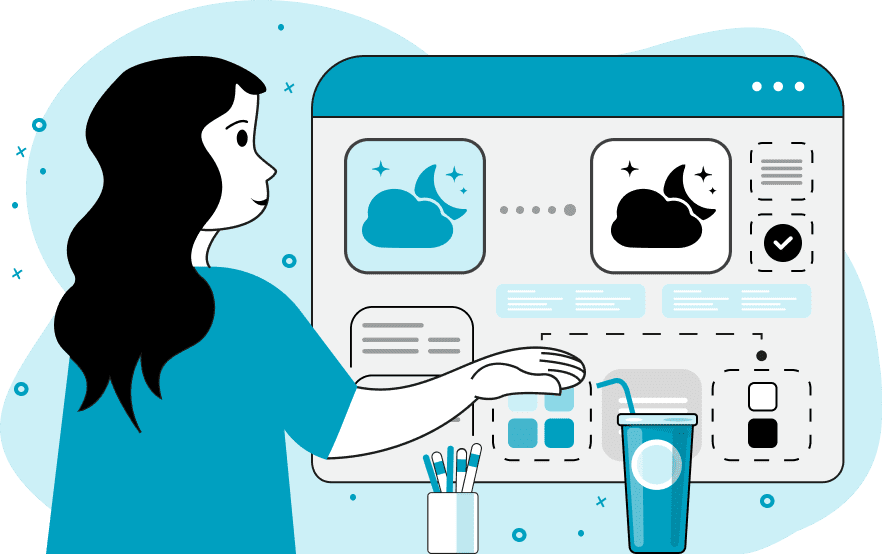
This tool converts color WebP images to two-color black and white WebP images (without shades of gray). The program offers two conversion algorithms for creating black and white WebPs. The first algorithm calculates the shortest distance to each of the black and white colors. All colors that are closer to white are converted to white (such as light gray, yellow, and aquamarine), and those closer to black are converted to black (such as dark gray, navy, and purple). This method creates highly contrasting WebPs, clearly separating dark and light areas. The second algorithm uses the dithering method, which pixelates shadowed and detailed areas with dots of varying density, resembling X-ray images. With dithering, you get smooth shadow gradients and better object detailing. Typically, white is used for light areas and black for dark areas, but these colors can be customized in the options. You can also swap them to make white represent dark areas and black represent light areas or set custom colors, such as red-black or blue-pink. To use the dithering algorithm, enable the corresponding checkbox in the options. Then, choose the most suitable dithering method for your WebP. Available methods include Floyd Steinberg, False Floyd Steinberg, Stucki, Atkinson, Jarvis, Burkes, Sierra, Two-row Sierra, and Sierra Lite. If you need to create a black and white WebP with shades of gray, then you can use our WebP to Grayscale Converter tool. Webp-abulous!
This tool converts color WebP images to two-color black and white WebP images (without shades of gray). The program offers two conversion algorithms for creating black and white WebPs. The first algorithm calculates the shortest distance to each of the black and white colors. All colors that are closer to white are converted to white (such as light gray, yellow, and aquamarine), and those closer to black are converted to black (such as dark gray, navy, and purple). This method creates highly contrasting WebPs, clearly separating dark and light areas. The second algorithm uses the dithering method, which pixelates shadowed and detailed areas with dots of varying density, resembling X-ray images. With dithering, you get smooth shadow gradients and better object detailing. Typically, white is used for light areas and black for dark areas, but these colors can be customized in the options. You can also swap them to make white represent dark areas and black represent light areas or set custom colors, such as red-black or blue-pink. To use the dithering algorithm, enable the corresponding checkbox in the options. Then, choose the most suitable dithering method for your WebP. Available methods include Floyd Steinberg, False Floyd Steinberg, Stucki, Atkinson, Jarvis, Burkes, Sierra, Two-row Sierra, and Sierra Lite. If you need to create a black and white WebP with shades of gray, then you can use our WebP to Grayscale Converter tool. Webp-abulous!
In this example, we transform a colorful WebP image of a bowl of apples into a high-contrast black and white WebP. The tool uses a simple algorithm that compares the color of each pixel to the black and white colors. Pixels that are closer to white are converted to pure white, and pixels that are closer to black are converted to pure black. This method creates a WebP with a sharp contrast between light and dark areas. (Source: Pexels.)
In this example, we use dithering to create a black and white WebP of the Ponte Vecchio bridge in Florence. Dithering uses dots of varying density to simulate shades of gray, resulting in smoother transitions between light and dark colors. Here, we use the Burkes dithering method, which is great for reducing artifacts and preserving detail. (Source: Pexels.)
This example converts a WebP photo of an orange and white cat into a custom two-color WebP. Instead of the standard white for light areas, it uses the color "floralwhite", and instead of the standard black for dark areas, it uses the color "chocolate". Additionally, it uses the Sierra dithering method, which provides detailed visualization of the cat's fur, eyes, ears, and even whiskers. (Source: Pexels.)
Edit WebP images in your browser.
Convert a WebP animation to an APNG animation.
Convert an APNG animation to a WebP animation.
Convert a WebP animation to a GIF animation.
Convert a GIF animation to a WebP animation.
Extract all frames from a WebP animation.
Convert a WebP animation to an MP4 video.
Convert an MP4 video to a WebP animation.
Convert a WebP animation to a WebM video.
Convert a WebM video to a WebP animation.
Find the difference between two or more WebP images.
Reduce the file size of a WebP image.
View the metadata information of a WebP image.
Remove all metadata information from a WebP image.
Edit the metadata information of a WebP image.
Play WebP animations frame by frame.
Extract one or more frames from a WebP animation.
Create a WebP animation from a sprite sheet.
Create a sprite sheet from a WebP animation.
View WebP images and in your browser.
Subscribe to our updates. We'll let you know when we release new tools, features, and organize online workshops.
Enter your email here
We're Browserling — a friendly and fun cross-browser testing company powered by alien technology. At Browserling we love to make people's lives easier, so we created this collection of WebP editing tools. Our tools have the simplest user interface that doesn't require advanced computer skills and they are used by millions of people every month. Our WebP tools are actually powered by our web developer tools that we created over the last couple of years. Check them out!
